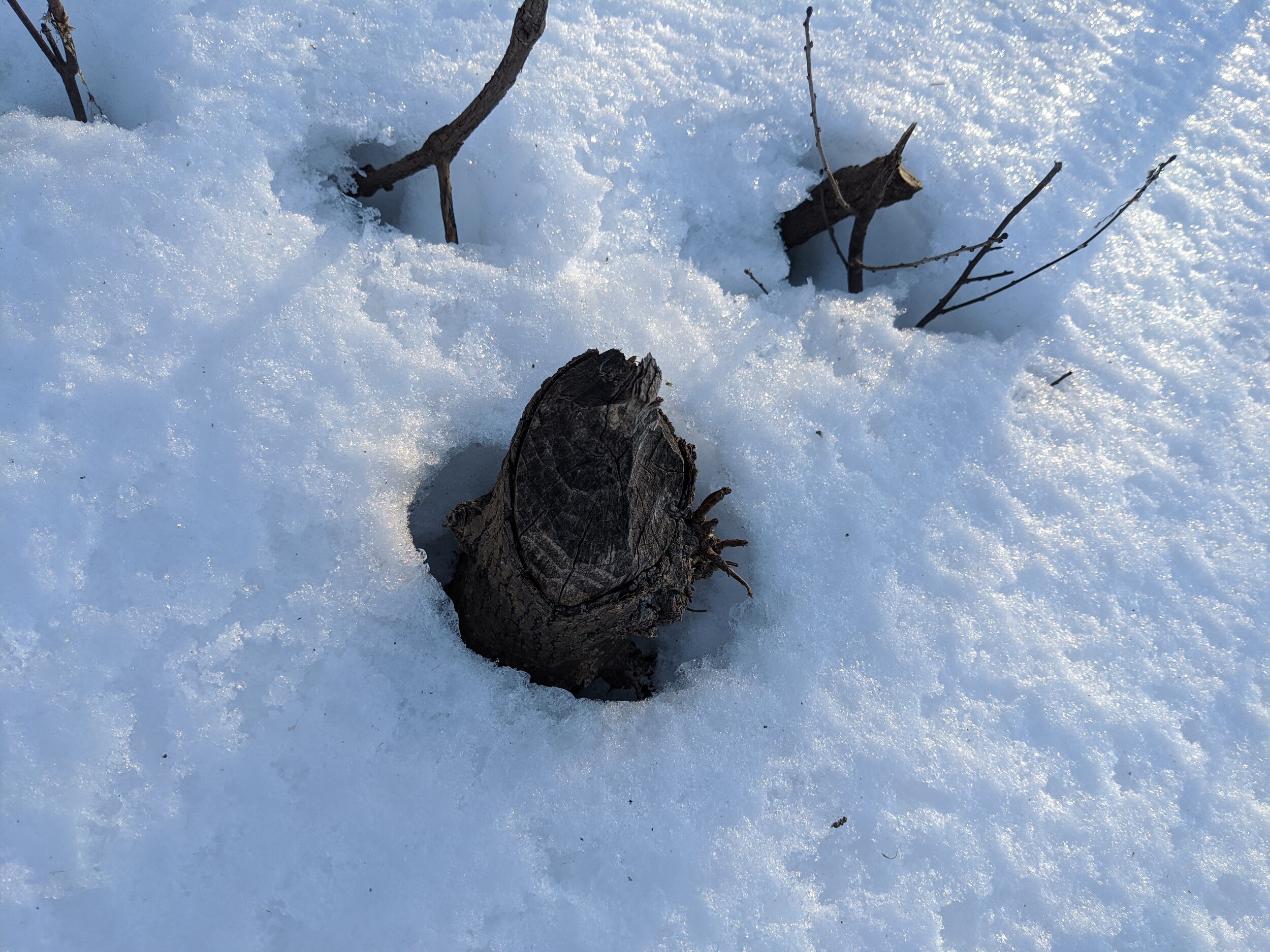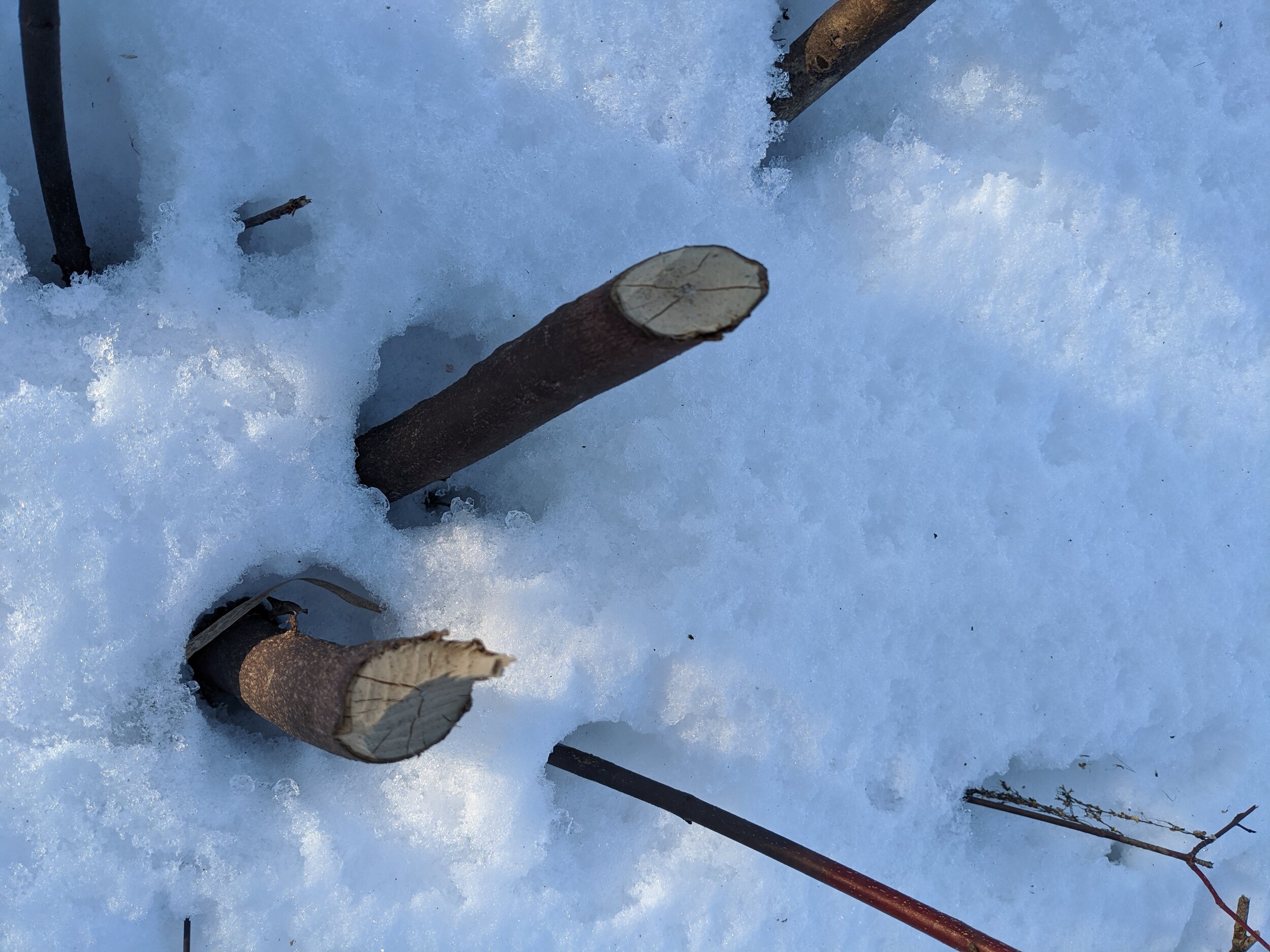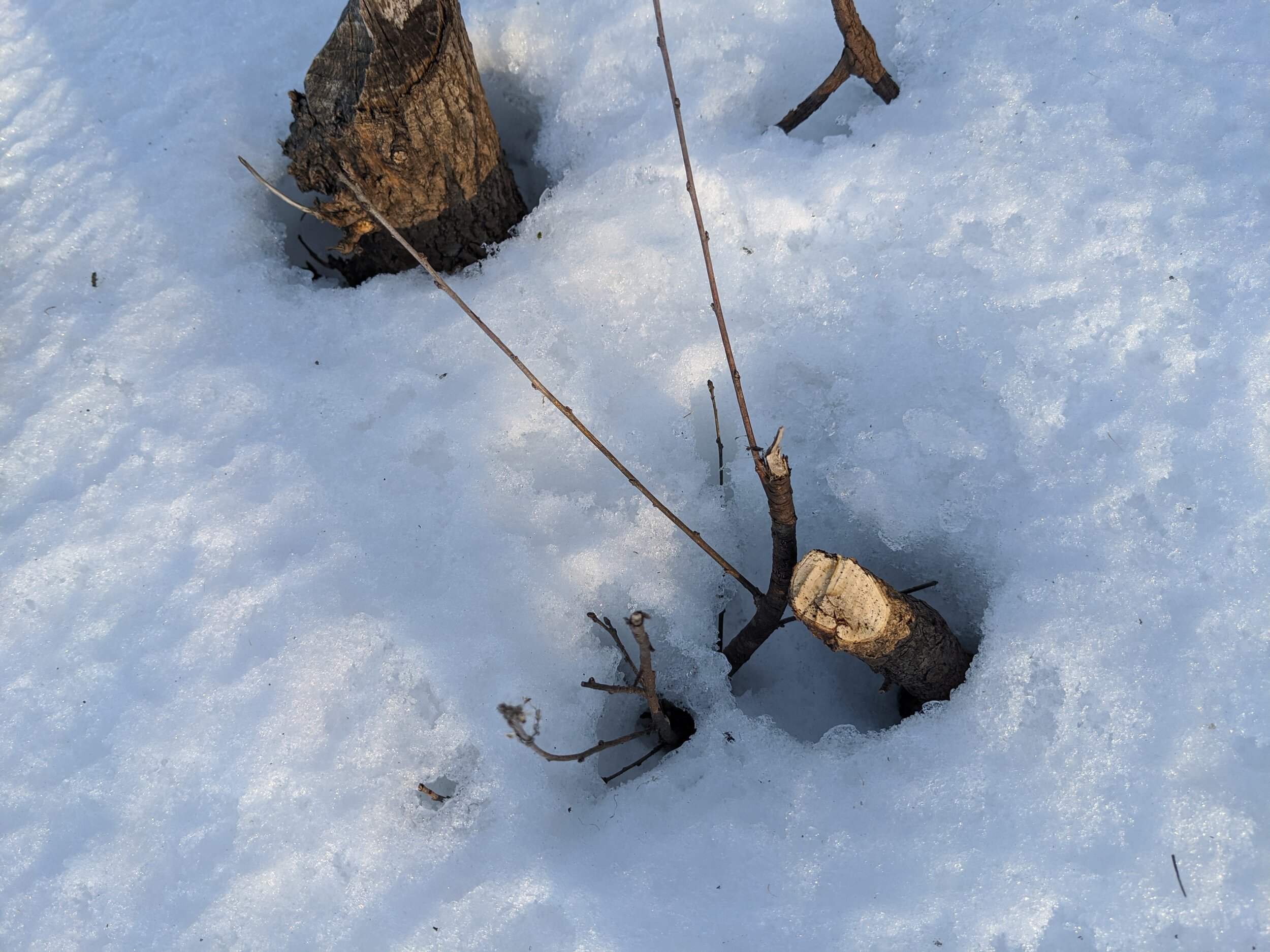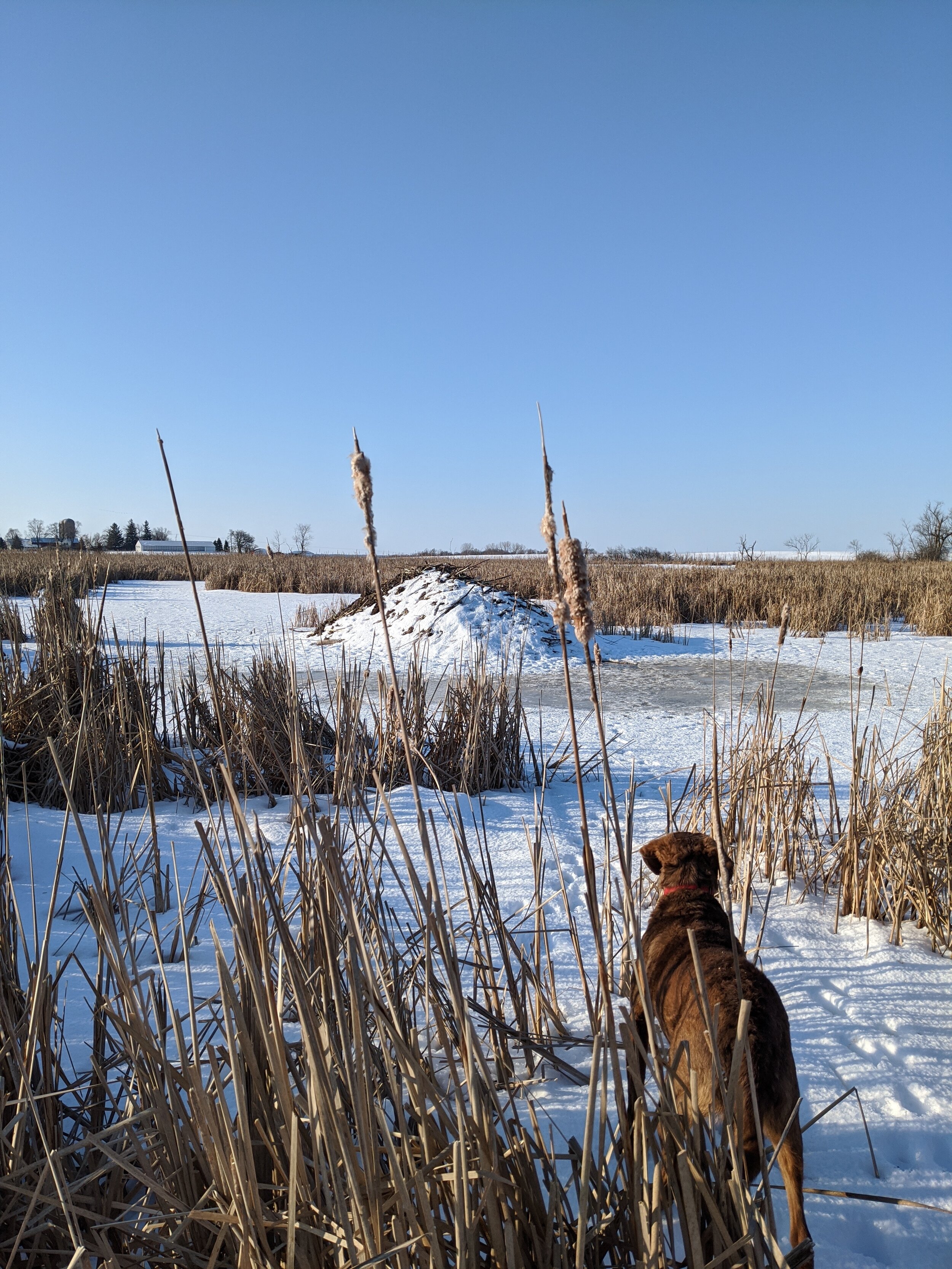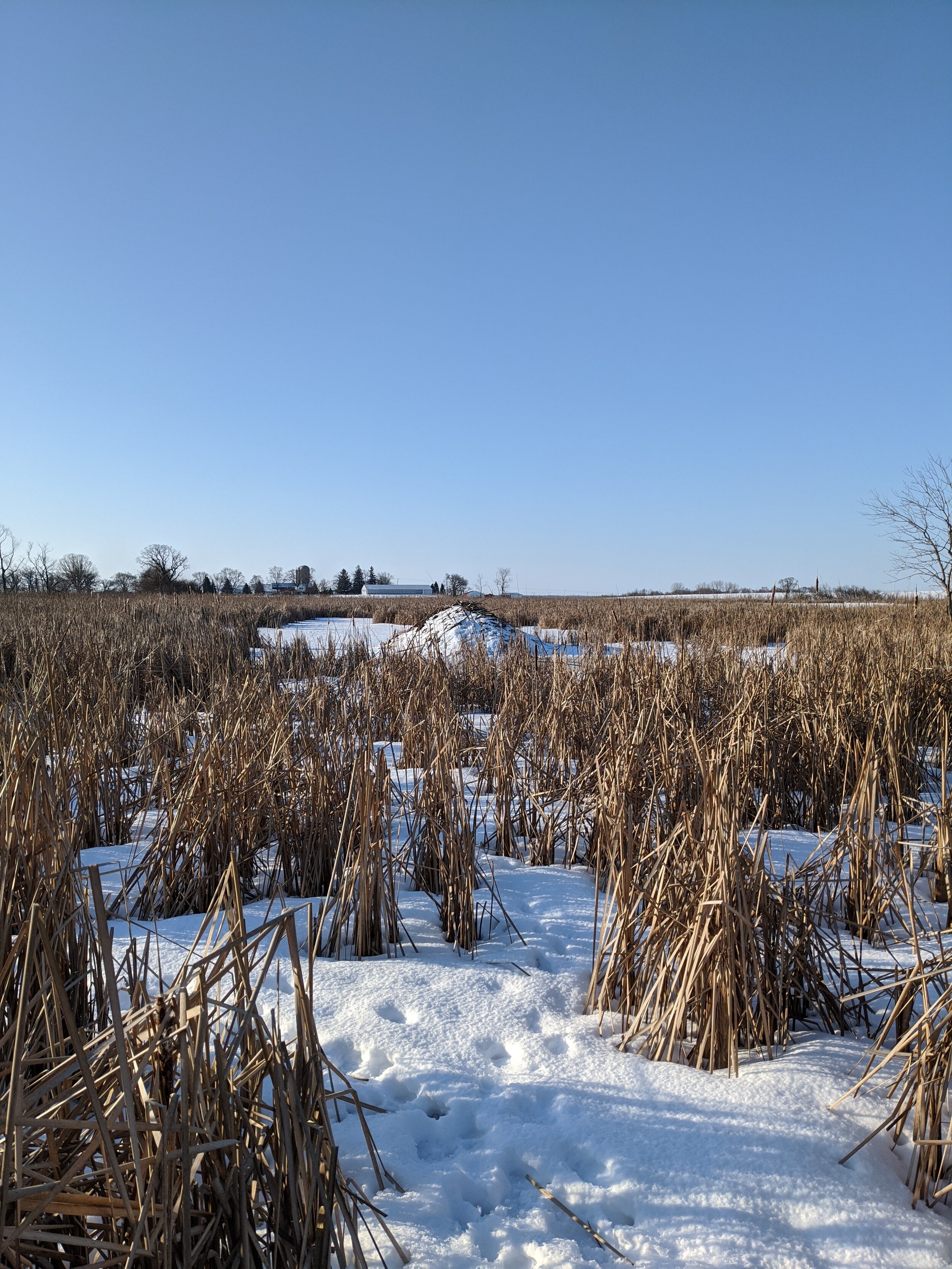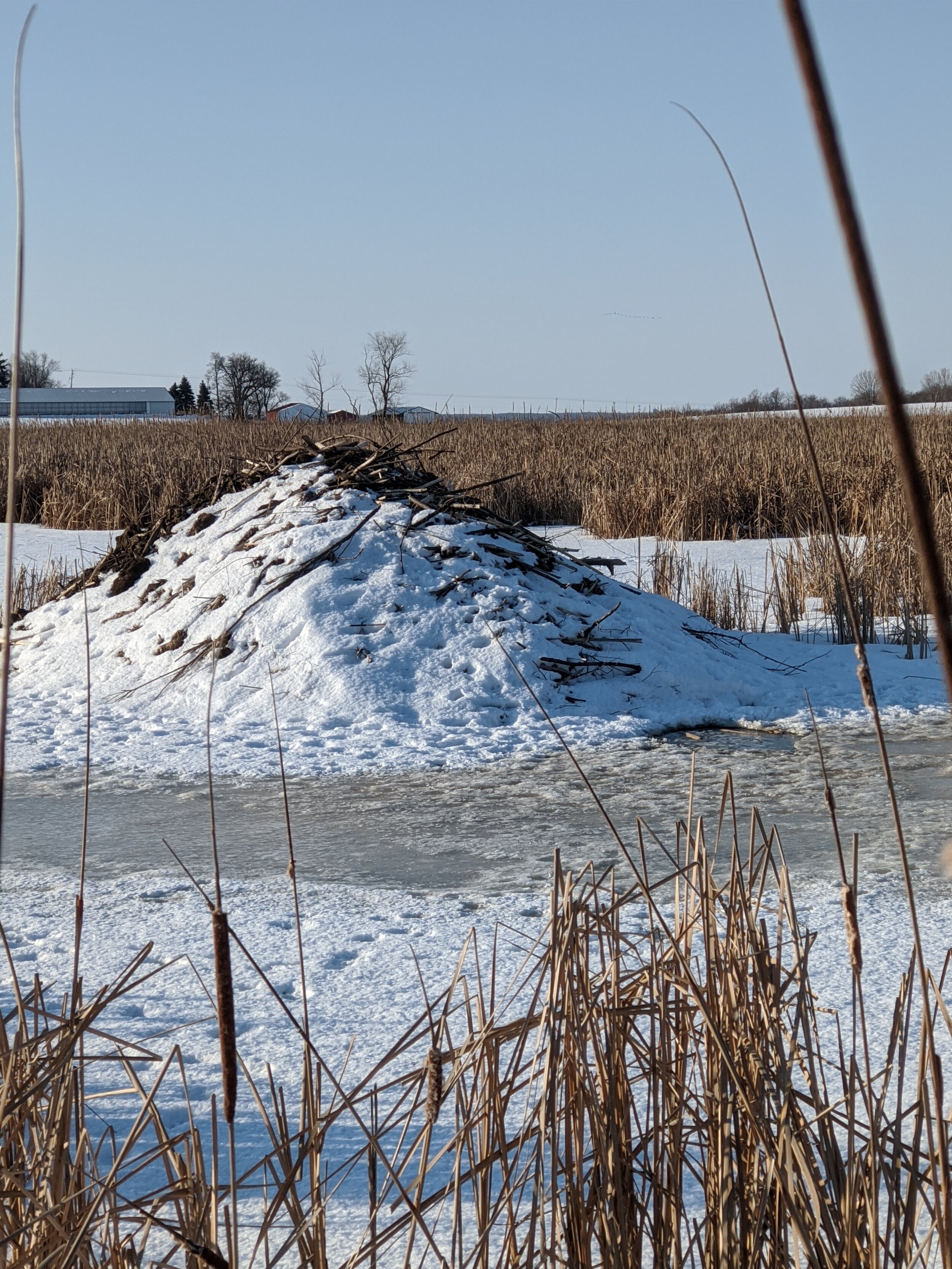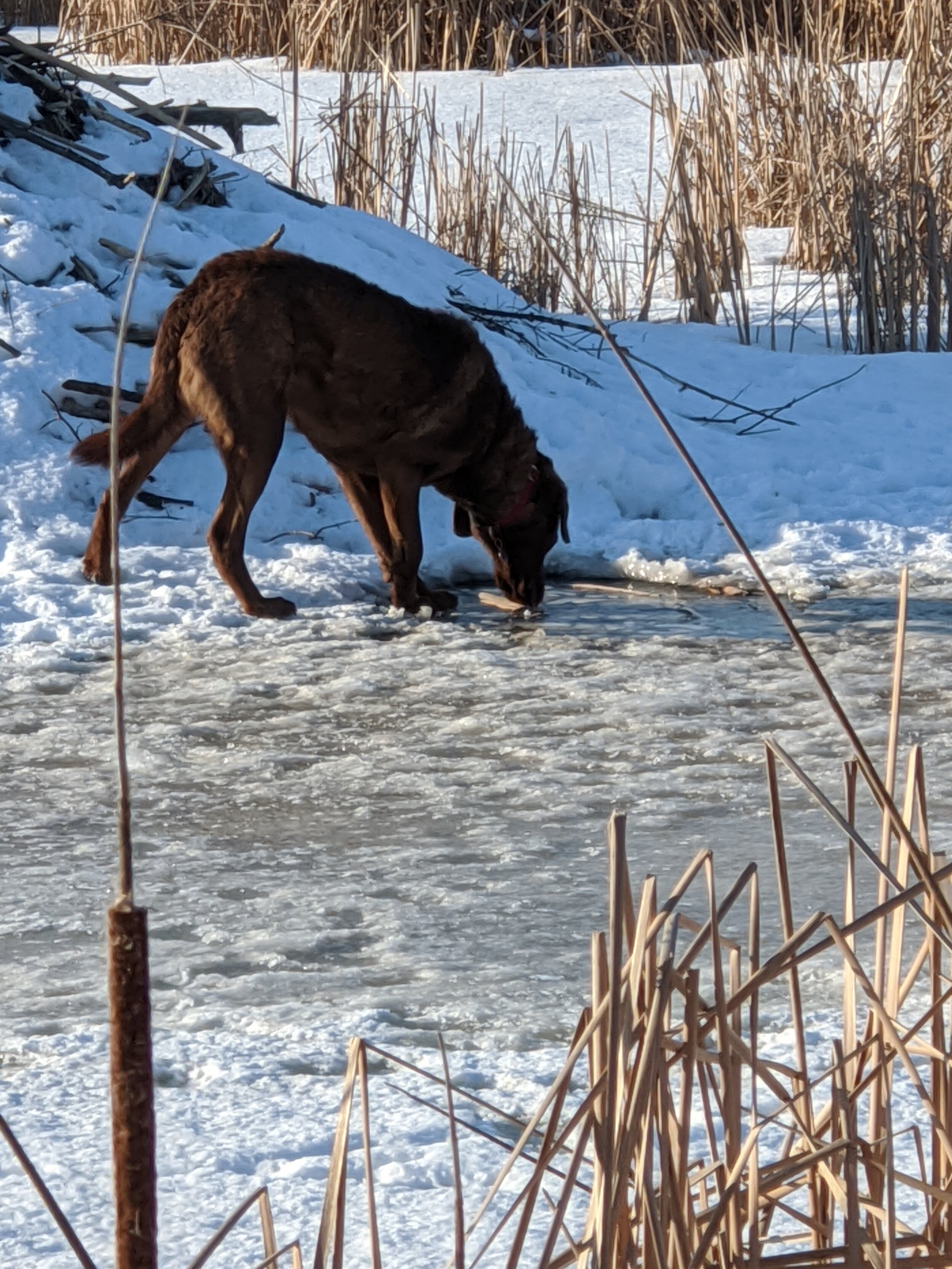Keystone species alert!!
About 6 months ago I was walking in our far west property line checking out the grass where the horses never went and I happened upon something I had never seen before. At the edge of the wetland in a thicket of scrubby trees, buck thorn, brambles, and red twigged dogwood, I found these giant pencil tips sticking out of the ground. Around their bases were little piles of shavings like someone with a giant sized pocket pencil sharpener had twisted them down. I looked around and saw about 15 or so in a 100 ft area. The trees of similar size were about 15 to 18 feet tall but these ones were gone, the whole top of the tree, without a trace. All that was left were these punji sticks sticking about 12 inches out of the ground. Geeze, I realized they had been made by beaver. Holy crap there were beaver on my property!!
I became obsessed with Beaver and where they were in the state, what the DNR regulations were and where these little guys were living and working in our wetland. The problem was, that I couldn’t really investigate any further. The west of our property is a wetland that stretches about eighty acres or so into the neighbor’s properties. I looked up the area on Google earth and the County GIS websites and tried to zoom in on the maze of ponds and wetlands but I couldn’t really see where they might be.
Relief for my obsession was eased when I read about a new book By Ben Goldfarb called Eager: the Surprising and Secret Life of Beavers and Why they Matter. A book store I follow in Madison sent me an invitation to a lecture series at the Olbrich Botanical Gardens in February where Ben would be talking about his book. “Great!” I thought, I would buy 4 tickets for Ed and Mom and Dad and I to go and give them as a Christmas presents. I downloaded the book on Audible and for the next few weeks I ‘read’ this amazing book on my commute to and from work.
Ben Goldfarb and his amazing book
this book is a must read for anyone interested in climate change and industrious animals
Now to go back a step, this was really exciting for me, because I think I had discovered a ‘Keystone’ species on my property. When we first wrote down all our Holistic goals for Brown Dog Farm, one of the big ones was that we would be good environmental stewards of this farm and the way we would know if we were accomplishing it would be that there would be a diversity of animals both domestic, and wild. We have been keeping track of all the animals we have seen on the property. Amazingly we have added species to the list every year. That was a good sign that we are on track. A ‘keystone’ species is a BIG deal. The Natural Resources Defense Council defines a keystone species in this way:
“A keystone species—which can be any organism, from animals and plants to bacteria and fungi—is the glue that holds a habitat together. It may not be the largest or most plentiful species in an ecological community, but if a keystone is removed, it sets off a chain of events that turns the structure and biodiversity of its habitat into something very different. Although all of an ecosystem’s many components are intricately linked, these are the living things that play a pivotal role in how their ecosystem functions.
Beavers are ecosystem engineers that dramatically reshape the physical environment around them. The dams they construct flood the surrounding landscape and form a wetland habitat of ponds and marshy meadows that can support a rich concentration of animals and plants. Freshwater fish, insects, amphibians, birds, other animals, and plants, including threatened and endangered ones, rely on wetlands for shelter, nursery habitat, and breeding and feeding grounds. Beaver dams and the wetlands they create also improve water quality in streams, replenish underwater aquifers, alleviate drought and water shortages, reduce flooding, store nutrients for plants, and reduce erosion of stream banks by slowing the flow of water.”
Fast forward to last Thursday night. Mom, Dad, Ed, and I trekked up to Madison to hear Ben Goldfarb, talk about the importance of Beaver to our environment, not only here in Wisconsin, but also in parts of the Pacific northwest, the Northeast and in the desert Southwest. Almost no animal on the continent has done so much for changing our environment. We nearly wiped this creature off the face of the planet in the 18th and 19th centuries, and now we desperately need to have them help us rework the effects of climate change. Goldfarb explained how we can learn to work with the Beaver and mitigate the desertification of arid areas and the flooding effects of temperate climates, when we harness their amazing capacity to alter the flow of water over the landscape. It was a very inspirational night. At the end of the talk, of course I asked about how we could support our Brown Dog Beavers. I actually asked him how could I find them and know if they were actually there. He told me that although they might not stay in our wetland the only way to know if they were really setting up shop, would be to locate a lodge. If there was a lodge that meant they were taking up residence. The winter is an opportune time to trek back into the wetland because in Wisconsin the wetland Freezes and we can walk on it!!
Saturday morning early Ed and I and Ryder hiked back to the pencil factory. From there we followed a channel carved through the cattails and lo and behold it led us right to a beautiful lodge. It is about 18 feet long and nearly 5 feet high. The sticks on the north side were covered with the snow but on the south side they were bare. As we approached we saw there was about a 2 foot opening in the ice right at the edge of the lodge. There were tracks all about the opening from coyotes and deer. They were able to drink from the open water, and maybe look for a little beaver tail snack. But the wily beaver of Brown Dog Farm are there!! There are at least 2 and maybe a whole family of kits, and I am thrilled!
WE FOUND THEM!!!
They’re in there just like this drawing!!
There is nothing that fills my heart as much as knowing that we might be helping our small holding become a more diverse and thriving environment. The fact that they are here means the trophic cascade of species that follow beaver might be establishing themselves here, countless amphibians, frogs, insects, wood ducks and birds of prey, warblers, vireos, thrushes, bats. The list goes on and on and as it does, our list of species on Brown Dog Farm grows and with it I know we are on the right track.

